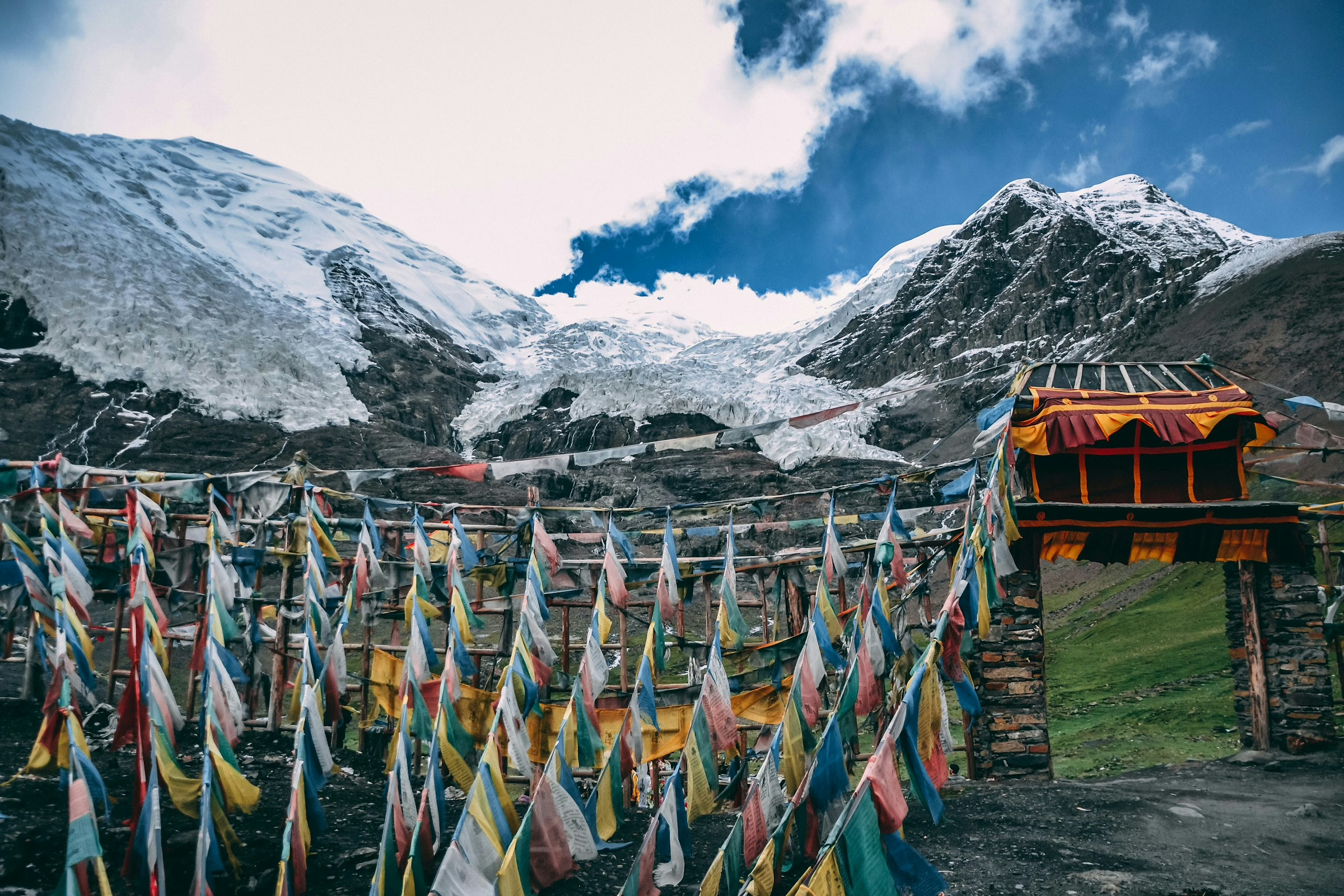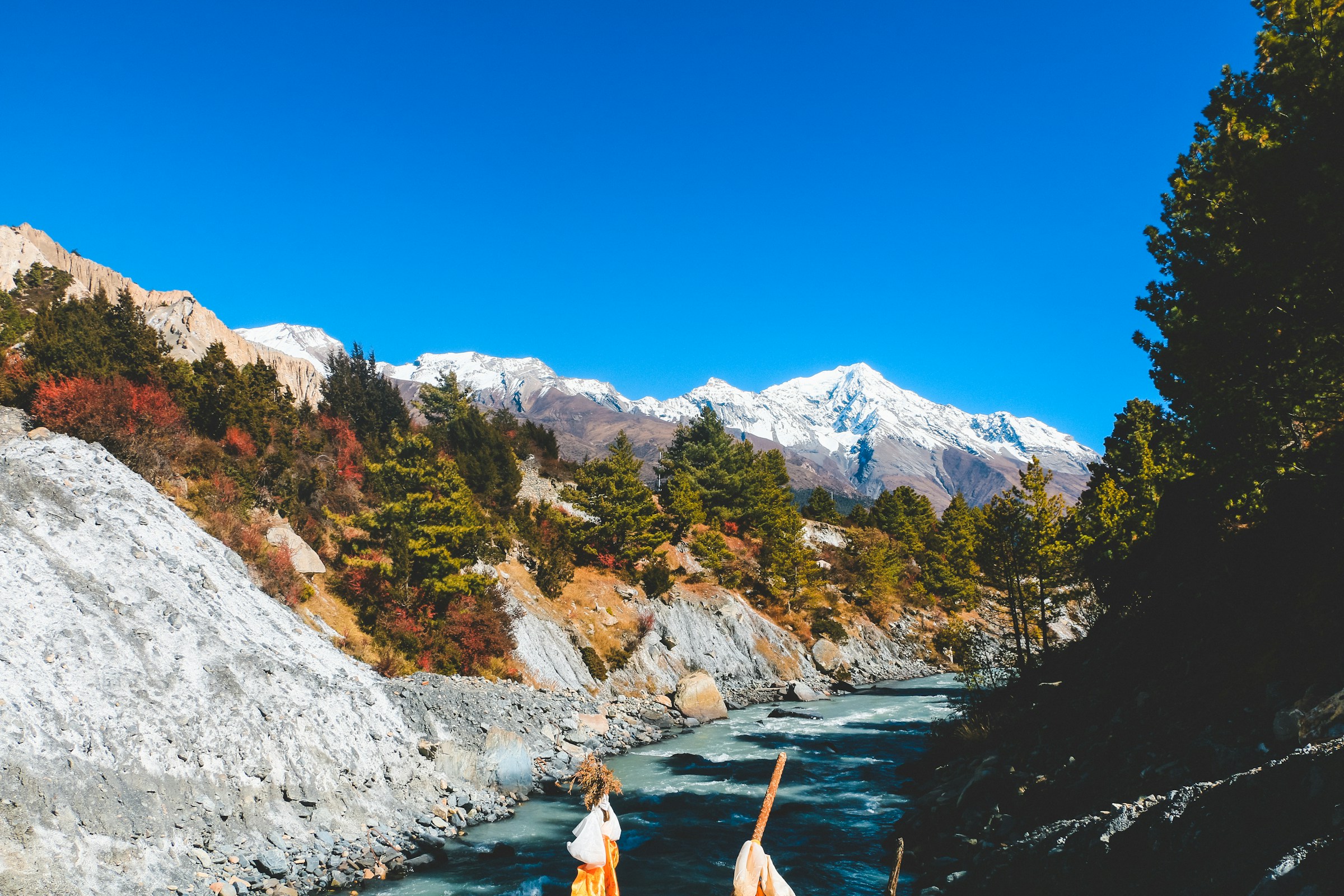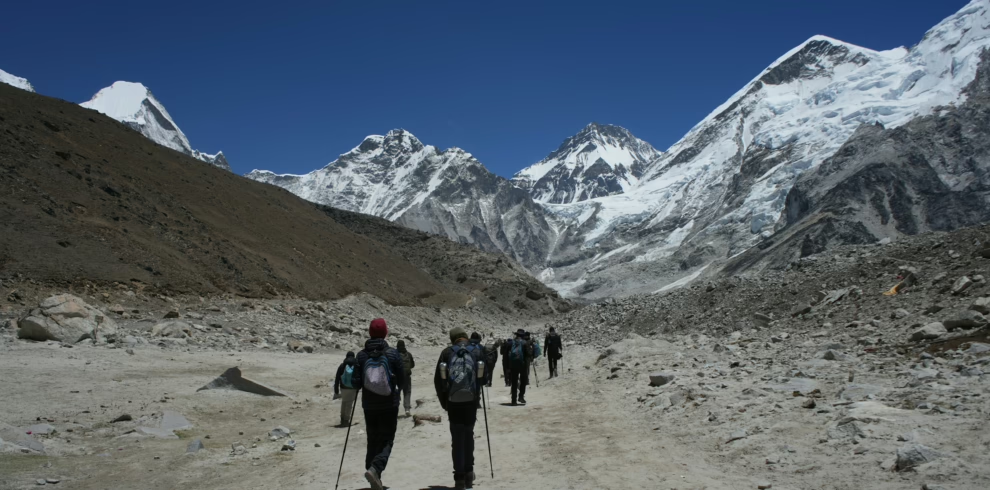Embark on the unforgettable 8-day Tibet Overland Tour —one of the most popular and enriching journeys into the heart of Tibet. This Lhasa adventure package combines breathtaking Himalayan panoramas, the awe-inspiring Potala Palace, timeless Tibetan traditions, and peaceful monasteries that echo centuries of devotion.
Your journey begins with a scenic drive through lush green landscapes toward Kerung at the Tibetan border. As you ascend, snow-capped peaks shimmer in the sunlight, creating a truly magical start to your adventure.
Spend three immersive days in Lhasa, exploring majestic temples and ancient monasteries steeped in spiritual history and artistic brilliance. Here, ancient heritage meets modern life in a vibrant city shaped by resilience, faith, and beauty. This tour is more than just a trip—it’s a soul-stirring experience that will leave you with unforgettable memories of Tibet’s rich culture and stunning landscapes.
8 days / 7 nights Tibet Overland trip
Discover the Spiritual Heart of the Tibet Region
Highlights
- Travel from Nepal to Tibet via the Kerung border, crossing lush valleys, rivers, and high Himalayan passes.
- Designed for comfort and safety, the itinerary includes well-timed stops to help travelers adjust to elevation changes.
- Visit iconic landmarks like the Potala Palace, Jokhang Temple, and Barkhor Street, rich in history and spiritual significance.
- Interact with friendly locals and gain insights into their traditions, religious practices, and daily life.
- Discover Tibet’s deep spiritual heritage through guided visits to centuries-old monasteries and cultural sites.
- Enjoy panoramic views of snow-capped peaks, dramatic mountain scenery, and the vast Tibetan Plateau.
- Scenic drive through breathtaking local markets, and historic sites like the Potala Palace.
- Discover the rich heritage of Tibetan culture by visiting various iconic monasteries, including Tashilhunpo, Drepung, and Sera Monastery in Lhasa.
Itinerary
We begin with an early morning drive from Kathmandu to Kerung, passing through scenic rural landscapes. After completing immigration and customs formalities at the border, we meet our Tibetan guide and continue uphill to the town of Kerung for an overnight stay in guesthouses.
Today we drive across the vast Tibetan plateau, crossing the 5,050m Lalung La Pass. If weather permits, we’ll enjoy panoramic views of Mt. Cho Oyu (8,201m), Mt. Shishapangma (8,012m), and even Mt. Everest (8,848m) from Shegar. Overnight stay in guesthouses.
We continue our journey toward Shigatse, passing over the Gyatchu La Pass (5,220m). Along the way, enjoy views of the vast plateau and rural settlements. Upon arrival, we settle into our hotel for an overnight stay on a bed and breakfast basis.
After breakfast, we visit the Tashilunpo Monastery, seat of the Panchen Lama, and explore Shigatse’s local bazaar. Then we drive through fertile agricultural lands to Gyantse, where we visit the Khumbum Stupa and Phalkor Monastery. Overnight at a hotel (BB basis).
Today's drive takes us over two scenic mountain passes—Karo La (5,010m) and Khamba La (4,794m)—and past the beautiful Yamdrok Tso (Turquoise Lake). We also cross the Yarlung Tsangpo (Brahmaputra) River and catch distant views of the Potala Palace before arriving in Lhasa for an overnight hotel stay.
We spend two full days exploring Lhasa’s cultural treasures, including the Jokhang Temple, Barkhor Bazaar, Potala Palace, and the monasteries of Drepung and Sera. Overnight at a hotel (BB basis).
Our tour concludes today. We transfer to Gonggar Airport for our flight to Kathmandu or another destination in mainland China. Air or train tickets can be arranged in advance.
Includes/Excludes
Cost Includes
- All land transportation by van or bus
- Hotel or guesthouse accommodation on a twin-sharing basis (bed & breakfast)
- Sightseeing with an experienced English-speaking Tibetan guide
- Monastery entrance fees
- All airport-hotel-airport transfers
Cost Excludes
- Lunch and dinner
- Nepal re-entry visa fees
- Any type of insurance
- Personal expenses
- Emergency evacuation costs
FAQs
Tibet lies in southwest China, bordering India, Nepal, Bhutan, and Myanmar. It traditionally consists of three provinces: U-Tsang, Kham, and Amdo. While all locals identify as Tibetan, each region has distinct cultural traits and dialects.
Under Chinese administration, Tibet has been divided and incorporated into various Chinese provinces. Today, “Tibet” typically refers to the Tibet Autonomous Region (TAR), which includes U-Tsang and parts of Kham. The remaining parts of Kham are now in Sichuan and Yunnan, while Amdo is split among Gansu, Sichuan, and Qinghai. Tibet spans approximately 1.22 million km²—about 12.8% of China’s land area. Its breathtaking high-altitude landscapes, rich Buddhist heritage, and proximity to Nepal make it a top travel destination for adventure seekers and spiritual explorers.
Tibet follows China Standard Time (GMT+8), which is 6 hours ahead of Greenwich Mean Time (GMT).
To enter Tibet, you need:
- A Chinese Visa, and
- A Tibet Travel Permit, both obtainable via a travel agency in Kathmandu if entering from Nepal.
A Chinese visa alone does not grant access to Tibet. Even travelers with a valid China visa must obtain a Tibet Travel Permit. You must pre-book a guided tour and private transportation for any travel outside Lhasa. Additional permits may be needed for certain regions, arranged by your travel agency.
By Road: Five main highways lead into Tibet:
- Sichuan-Tibet Highway (Chengdu to Lhasa)
- Qinghai-Tibet Highway (Xining to Lhasa)
- Yunnan-Tibet Highway
- Xinjiang-Tibet Highway
- China-Nepal Friendship Highway (Only international road link)
By Air: Flights to Lhasa stop in major cities in China or Kathmandu, Nepal. Lhasa Gonggar Airport is located 98 km south of Lhasa.
By Rail: The Qinghai-Tibet Railway connects Golmud (Qinghai) to Lhasa, covering 1,142 km.
Due to its high altitude, Tibet experiences cold and unpredictable weather. Lhasa enjoys sunny, cool days but chilly nights. Snow is rare, but frost is common for half the year. High-altitude lakes may freeze between October and March. Lhasa’s valley location offers milder conditions compared to other areas.
The best time to visit Tibet is from April to early November, especially in May, June, and September. Lhasa, with its mild climate and abundant sunshine, is a year-round destination. Sun protection is essential due to intense solar radiation.
You’ll need:
- Passport (valid for at least 6 months)
- Chinese Visa (for entry from mainland China)
- Group Visa (for entry from Nepal)
- Tibet Entry Permit (issued by Tibet Tourism Bureau)
Additional permits:
- Travel Permit: For visiting restricted areas.
- Military Permit: For military-sensitive zones.
No. Due to strict regulations, independent travel is not allowed. All travel arrangements, including permits and visas, must be handled by an authorized travel agency. Solo travel without a guide is not permitted.
Yes. Tibet’s high elevation can cause altitude sickness, especially for those from lower altitudes. Symptoms may include headache, fatigue, or loss of appetite. Most people adjust within a few days. It’s recommended to consult your doctor for preventive medication and take it easy upon arrival.
ATMs are available in Lhasa and Shigatse but may be hard to find in smaller towns. Carry sufficient cash, especially when traveling to remote areas.
Tibet uses the Chinese Yuan (RMB). Foreign currencies can be exchanged at the Bank of China. Credit cards and traveler’s cheques are rarely accepted outside Lhasa.
As long as travelers avoid political discussions and stay within permitted areas, they are unlikely to face any issues.
Recommended vaccinations include:
- Hepatitis A & B
- Typhoid
- Influenza
- Tetanus/Diphtheria
- Polio
- Rabies
- Pneumonia
- Chickenpox (Varicella)
- MMR (Measles, Mumps, Rubella)
- Tuberculosis
- Yellow Fever (if coming from affected regions)
Consult your doctor before departure.
No. All tours include English-speaking guides. Major hotels in Lhasa and Shigatse also have English-speaking staff. Tibetan, Chinese, English, and Nepali are commonly used languages.
Yes, but mainly in cities like Lhasa, Shigatse, Gyantse, and Tsedang. Hotels in these areas often offer internet access. Rural areas may have limited or no connectivity.
The Tibet Overland Tour is a breathtaking journey that takes travelers across some of the most dramatic landscapes on Earth. Starting from Kathmandu, Nepal, this adventure offers a unique opportunity to cross into Tibet via the Kerung border, showcasing the awe-inspiring beauty of the Himalayas along the way. From lush valleys and cascading rivers to snow-capped peaks and high mountain passes, the route is nothing short of spectacular.
This overland tour is ideal for those who wish to explore Tibet at a comfortable pace while acclimatizing to the high altitude. The journey includes stops at culturally rich Tibetan towns and ancient monasteries that reflect the deep spiritual heritage of the region. A highlight of the Tibet Overland Tour is the visit to Lhasa, the spiritual heart of Tibet, where travelers can explore iconic landmarks such as the Potala Palace, Jokhang Temple, and Barkhor Street.
Travelers also get the chance to witness authentic Tibetan culture and interact with the warm-hearted locals, gaining insights into their daily lives, traditions, and religious practices. The tour blends cultural exploration with natural beauty, making it perfect for those seeking both spiritual connection and adventure. With stunning landscapes and historic sites at every turn, the Tibet Overland Tour leaves a lasting impression.
The road journey is not only scenic but also well-organized, with expert guides, comfortable vehicles, and planned acclimatization stops to ensure a safe and enjoyable experience. Whether you’re a first-time visitor or a seasoned traveler, this tour is suitable for all age groups and experience levels. The gradual altitude gain also helps reduce the risk of altitude sickness, allowing travelers to enjoy every moment of the journey.
In summary, the Tibet Overland Tour is a once-in-a-lifetime experience that combines the best of nature, culture, and spirituality. From panoramic Himalayan views to deep cultural encounters, it offers everything a curious and adventurous traveler could wish for. If you’re looking to explore Tibet in a truly immersive way, this overland journey is the perfect choice.
Visa Information
To fly into Tibet, travelers need both a Chinese visa and a Tibet Travel Permit, which can be arranged in Kathmandu through a licensed travel agency (for entry via Nepal). A Chinese visa alone is not sufficient. Even travelers entering from mainland China must obtain a Tibet Travel Permit.
To get the permit, you must book a guided tour and pre-arrange private transport for any travel outside Lhasa. Additional permits are required for certain areas, and your travel agency will handle these on your behalf.
Required Documents
- Passport: Must be valid for at least 6 months.
- Chinese Visa: Apply at any Chinese embassy or via recognized agents (required for entry from mainland China).
- Group Visa: Required for travelers entering Tibet from Nepal. This replaces any existing individual Chinese visa, which will be canceled.
- Tibet Entry Permit: Issued by the Tibet Tourism Bureau; mandatory for all foreign travelers entering Tibet.
- Additional Permits for Restricted Areas:
- Travel Permit: Needed for visiting restricted or “closed” regions. Issued upon arrival.
- Military Permit: Required to access certain militarily sensitive zones.
Weather Information
Tibet has a high-altitude climate with generally cooler temperatures than mainland China. Summers bring warm, sunny days and chilly nights, especially at higher elevations. Winters are cold, but snowfall is limited. Lhasa, located in a lower valley, enjoys milder conditions and abundant sunshine even in winter.
Frost is common for six months of the year, and high-altitude lakes may remain frozen from October to March. Climate conditions vary widely by region.
Safety Guidelines during Tibet Overland Tour
Follow these important safety tips during your Tibet tour:
- Always carry at least two copies of your Tibet Travel Permit.
- Keep your passport, cash, and valuables secure and with you.
- Inform your guide immediately if you experience symptoms of altitude sickness or feel unwell.
- Rest upon arrival in Lhasa; avoid strenuous activity or sightseeing on the first day.
- Spend a few days acclimatizing in Lhasa before traveling to higher elevations.
- Avoid alcohol and smoking during acclimatization.
- Be cautious of sunburn and sudden temperature changes; pack suitable clothing and sunscreen.
- Only buy souvenirs from reliable shops; avoid purchasing wildlife products, unknown Tibetan medicines, or fake goods.
- Do not engage in political discussions or carry materials related to the Dalai Lama or Free Tibet.
- Avoid traveling alone at night or going to unfamiliar places without informing your guide.
- Most places accept cash only, so carry enough small denominations.
- In case of emergency, contact your guide immediately.
- Respect local customs and religious practices, and avoid cultural taboos.




